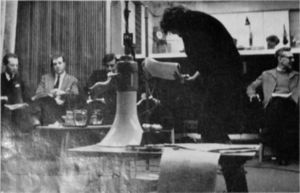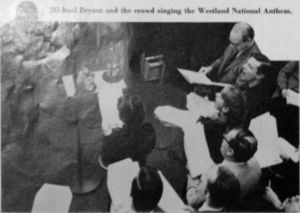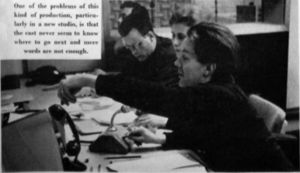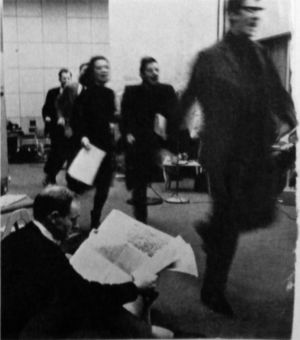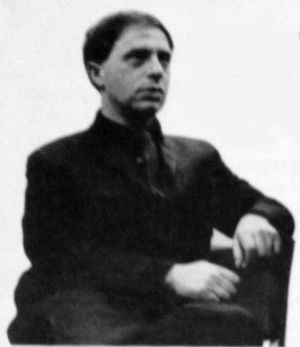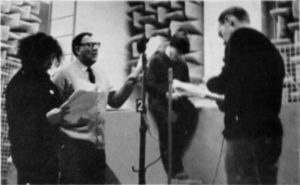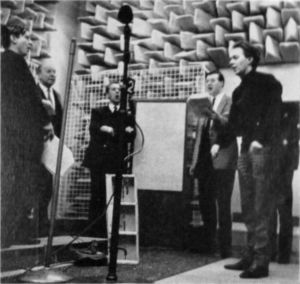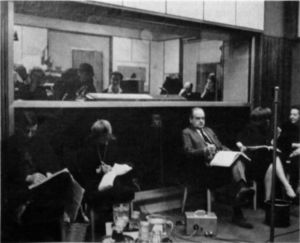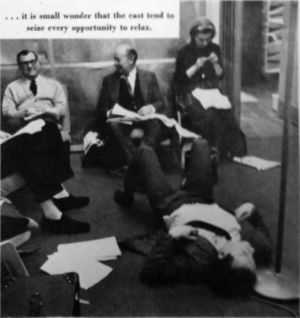The Dark Ages: A study in pictures of a radio production
Delia's papers contain a glossy magazine article entitled The Dark Ages: A study in pictures of a radio production by Michael Bakewell about the creation of the radio play The Dark Ages.
This transcript is taken from DD135326 and DD135343.
Transcript
THE DARK AGES
THIRD PROGRAMME — 1 MAY [1965]
A study in pictures of a radio production
THE DARK AGES take place in the womb.
It is a nightmare vision of the future in the
mind of a baby waiting to be born. It is the
last leg of a trilogy by Bernard Kops (Home Sweet Honeycomb,
The Lemmings) and there are times
when I feel I have never worked with any other writer.
Bernard believes in the art of total
radio—sound can do anything, say anything. A typical
direction reads:
There are quiet sounds denoting the fact that
everyone and everything is turning or has turned
to gold.
Or again:
When the music starts we think it is about to be
Verdi's Requiem but instead it is a very slow
rendering of the Hokey-Kokey.
There can be no half measures in putting his
work on air. You simply have to give him
exactly what he asks for and hope that it will
work. It is a matter of continual astonishment to
me that it always does. However, this time he had
presented us with an even more difficult problem
than usual since nearly every scene had to have a
special electronic background. We decided that
[continued on DD135343]
this could only be added at a later stage at the
radiophonic workshop and that we should confine
our time in studio B.10 to recording the words and
some of the simpler sound effects sequences:
A child cries. A horse cries from fear. A woman
screams. And men march, march, march. Sirens.
And through this Bing Crosby sings ‘Love in
Bloom’. Missiles scream down.
Sounds of machine-gun fire and people cheering
and community singing and then the moving
pavement and singing ‘For He's a Jolly Good
Fellow’.
For six days the cast sang, danced, screamed,
and cheered their way through the script. Anyone
who believed that radio was a quiet remote affair
where actors stood round the mike and read their
scripts was rapidly disillusioned. There were wild
ecstasies of excitement in the betting shops, surplus
people were shot by thousands in the brain
room, and over and over again—or so it seems now—the
Hokey-Kokey was danced by an unflagging
cast. Later in the year I have to produce the play
for German radio in Baden Baden. I shall be very
curious to see how the Germans take to this kind
of treatment.
Michael Bakewell
Photographs by ‘Radio Times’
